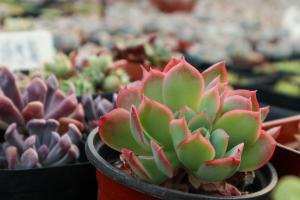1、 Curing method
1. Substrate selection: it is more suitable for planting in culture soil. Sandy soil with good drainage and air permeability can be selected, or water moss can be used to replace soil for breeding, or submerged pot planting can also be used

2. Light management: it likes to grow in a half day shade environment. It has low requirements for light, strong adaptability to light and strong resistance to negative light. It can also keep the leaves fresh green under the condition of indirect light. It can be arranged continuously in a dark room for one month. It is best to breed in a bright room to keep the beauty of leaf shape and color for a long time. In summer when the temperature is high, shade properly and avoid direct sunlight

3. Nutrient management: in its growth period, it is necessary to carry out appropriate topdressing. Dilute fertilizer can be sprayed on the leaves every half month. Pay attention to avoid plant roots and rotten roots

4. Temperature management: it likes high temperature and humid environment. The ambient temperature is preferably 10 ℃ - 35 ℃. In winter, the room temperature should be maintained above 5 ℃. If the temperature is low, warm and antifreeze measures should be taken in time

2、 Breeding skills
1. Propagation method: its propagation usually adopts cutting method. Cutting method: the branches can be trimmed from the branches with poor plant type as cutting materials. Take a section of 5 to 10 cm and cut horizontally or vertically on the sowing bed with coarse sand as the medium

2. Pruning method: if the plant grows too tall or leaves fall at the bottom of the stem, resulting in unsightly plant type, it shall be pruned in time, which can be carried out in combination with pot change in early spring of each year

3、 Problem diagnosis and treatment
1. Yellowing of leaves: if the temperature is too low or in a shady environment for a long time, the leaves will turn yellow. Therefore, attention should be paid to maintaining the appropriate temperature and light of the environment

2. Withered and scorched leaves: there are many causes of withered and scorched leaf tips. Irregular watering, fertilizer damage, drought and excessive ventilation may cause withered and scorched leaf tips. Special attention should be paid to daily maintenance

4、 Other issues
1. Placement: it has distinct branches and leaves, dark green leaves and high gloss. It is a very popular high-grade indoor foliage plant. The characteristics of low requirements for light make it especially suitable for potted decoration indoors. It can be placed in a spacious study and living room, elegant, simple and exotic. It absorbs indoor oxygen at night, so it's best not to breed in the bedroom

2. Toxicity: it has no toxicity and can absorb indoor harmful gases< a>


 how many times do yo...
how many times do yo... how many planted tre...
how many planted tre... how many pine trees ...
how many pine trees ... how many pecan trees...
how many pecan trees... how many plants comp...
how many plants comp... how many plants can ...
how many plants can ... how many plants and ...
how many plants and ... how many pepper plan...
how many pepper plan...































